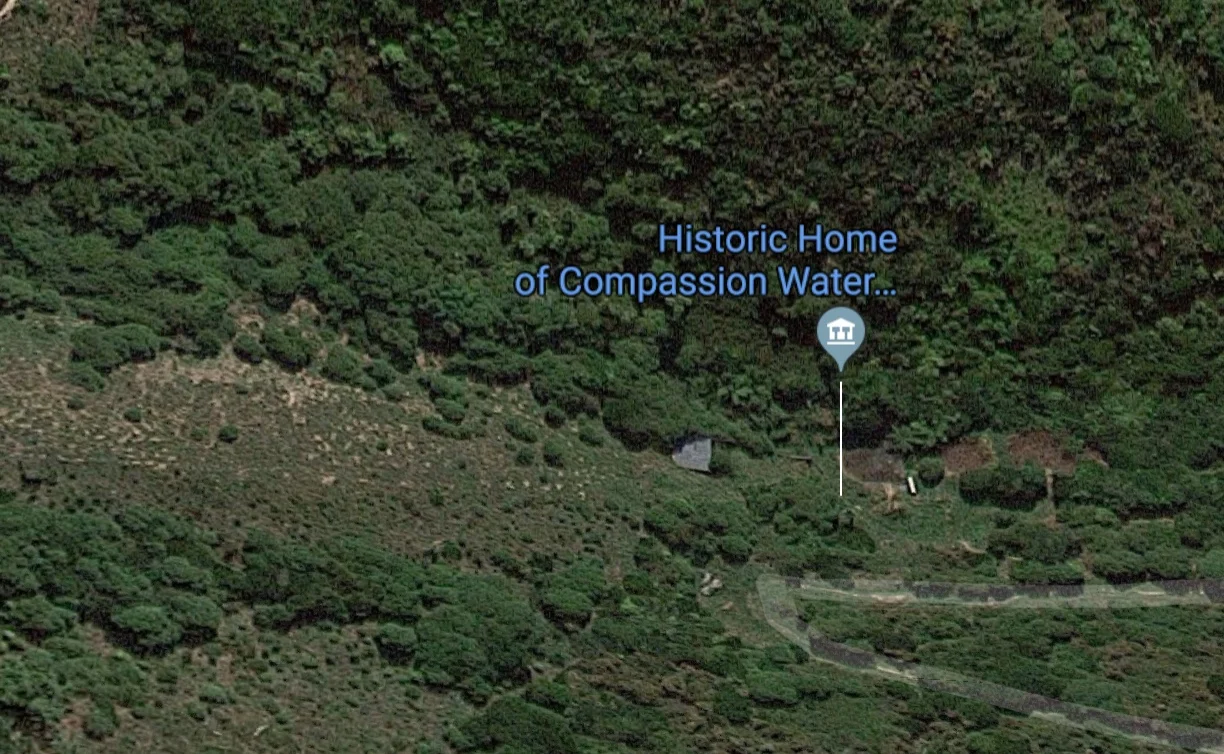After the Marae fire: Planting Work Continues
We received a delivery of 980 plants from Wellington City Council’s Berhampore nursery a couple of days prior to our first working bee.
A couple of nights later, disaster struck with a fire completely destroying the main buildings at Tapu Te Ranga Marae.
Despite the sad and sudden loss of the marae buildings, we decided as a committee that it was important to carry on with our work, especially as the June planting was all in areas along the boundary of Manawa Karioi and the access roads of the marae. The marae buildings can be replaced, and the Manawa Karioi forest will be growing even closer to them.
Our plants were very close to the buildings, but we only lost about 30 (all of this year’s porokaiwhiri (pigeonwood) and most of our pate (Schefflera digitata).
Most of the June plantings were in large blocks, using mostly hardy species that need open spaces. For August we will be taking a different approach, focussing on trackside planting and establishing future canopy and understory species.
This will be done in several different locations – we will continue with understorey planting along the marae driveway leading in from Rhine St, as well as planting hardy species along the upper slopes near our boundary with Tawatawa reserve.
We had a successful month of planting in June, with large groups of people kindly volunteering their time.
We will also be focussing on planting around the historic water reservoir in the gully from which we take our projects’ name – Manawa Karioi. This area has had a lot of natural regeneration of native bush along the stream bed and on the south-facing slope above it. However, this has been mostly of a limited number of species; predominantly mahoe and the tree fern mamaku, with an understorey of hangehange, kawakawa and rangiora.
Almost two decades ago, students from Victoria Environment Group planted a range of colonising species on the slope to the west of the reservoir. At several working bees over the last 3 years we have planted a wider range of trees further up the slope, and previously we had put in small numbers of kotukutuku, nikau, tawa and pukatea along the stream bed.
A former Manawa Karioi volunteer, Peter Hills, writes:
“In Spring of 2003 members of the Seed Carriers Hikoi completed their journey by staying at Tapu te Ranga Marae. After presenting their story to then Environment Minister, Marian Hobbs, they planted a number of Kahikatea around the Manawa Karioi spring. These had been sourced from local seed and grown in the Manawa Karioi nursery. The total number planted was twelve.
In 2004, I sourced twelve local Matai plants from the same nursery and planted them in the catchment area directly above the spring. These were planted to honour the twelve people who walked and reopened the Peace Trail ‘Te Huarahi o Rongo-marae-roa ' with Barry Brailsford in 1989.”
We will continue to increase the biodiversity of this gully by planting more kotukutuku, kohekohe and pate along the streambed, while on the sunnier slopes above it we will put in a small number each of totara, rata and rewarewa, and larger quantities of more common colonising species.
Pate: A small tree to 8m high, it flowers February/March with fruit ripening two months later, which is a food source for several bird species. Pate is the most common host of the parasitic plant Dactylanthus taylori. This is a root parasite which was known to the Maori as 'Pua-o-te-reinga', 'the flower of the underworld', which alludes to the way its’ flowers emerge from under the ground.
Kotukutuku: Growing to 15m high, it is the world’s tallest tree fuschia. Flowers appear between August and December. They change from greenish-yellow to purple-red.The flowers are rich in nectar and are visited by honey-eating birds, especially tūī, bellbirds and silvereyes. The dark purple berries, known as kōnini, are edible and taste like tamarillos.
Kohekohe
Kohekohe: This was once the main forest canopy tree in the coastal strip around Wellington. While stands of it remain in patches along the Kaiwharawhara Stream catchment, in south Wellington we only know of one mature tree over the ridge in Tawatawa Reserve, and up to five on Te Motu Kairangi/Miramar Peninsula.
It is one of the few native trees to flower in winter, producing impressive quantities of small flowers directly from the trunk and branches in June. While we have planted dozens of kohekohe around Manawa Karioi, only one has been seen flowering yet, located by the track Te Ahi Kaa where it crosses Seed Source Gully.
Written by Ross Gardiner
Photos by Ness Patea
We have pledged to plant another 1000 trees in 2019 at Manawa Karioi Ecological Restoration Project in the hills of Island Bay.
We would appreciate help from any keen volunteers to the scheduled working bees. Please RSVP to this email to let us know which planting event you would like to attend or sign up via our Facebook event.
Upcoming Manawa Karioi Upcoming Planting Working Bees:
Sunday 4th August from 1pm - 3pm
Sunday 11th August from 1pm - 3pm
Sunday 18th August from 1pm - 3pm
Sunday 25th August from 1pm - 3pm
Meeting at the Interpretation Board Shelter in the Tapu te Ranga Carpark at the end of Danube Street in Island Bay.







